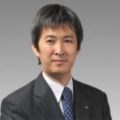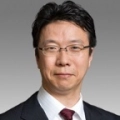Technology | 5 min read March 2019

Emerging Markets | 3 min read | November 2018

Emerging Markets | 3 min read | November 2018
Concerns about the impact of trade friction between the US and China have resulted in a more widespread wait-and-see stance towards capex, and we think there could be moves to reduce inventory risks for end products through the end of the year. This could have a major impact on memory, prices for which vary widely depending on supply-demand conditions, and we think producers could well postpone capex and delay the start of reinvestment until 20/3 H2.
Meanwhile, computing architecture is advancing owing to memory hierarchy innovation. While the performance of processors and storage continues to improve, the gap between their performances widens. Thus, different types of memory are ways being proposed to bridge this gap and improve overall performance. Examples include the use of high bandwidth memory (HBM) for DRAM, the main memory, and storage-class memory (SCM), which bridges the gap between DRAM and NAND flash. Each memory type has different characteristics, and they will therefore coexist rather than completely replacing other types, but we expect competition between memory types to continue as a new memory hierarchy emerges.
There are three basic functions in data processing hardware: processors that process data, storage that stores data and networks that transmit data. The processor and storage fields have now advanced independently to improve computing performance. Storage however, is divided into memory which stores data temporarily, and auxiliary storage which is data stored over a longer timeframe. There are various memory and storage products, relative in terms of cost and performance.

Memory hierarchy refers to how memory and storage are used according to the charactersitics of each type. Typically, the mainstay memory hierarchy up to now has been to use DRAM for the main memory, and HDDs (auxiliary storage) for storage. SSD (NAND flash) is being increasingly used in place of HDDs as the cost of the former falls. In data centers however, it is usual to combine DRAM, SSDs and HDDs. With the 3D NAND market taking off, this led to the cost of NAND flash falling and the gap between DRAM and NAND getting wider. SCM emerged as an idea to bridge that gap.
There are many SCM candidates of which Optane DC persistent memory is leading the way with its lower cost and likelihood to increase overall memory. This product uses Intel's 3D XPoint technology, developed in partnership with Micron in 2015, and has the advantages of lower electricity consumption owing to its nonvolatile properties, faster startup speed and lower costs.
Although performance is not at the level initially anticipated, access speed is in-between that for DRAM and for SSDs and latency is low, but it can be adopted at a lower cost than DRAM if capacity is the same.

There are many potential candidates for the type of next-generation memory that will become the mainstream, but Intel could be said to be taking the lead because it has entered into strategic partnerships with major users such as Google and SAP and looks likely to start mass production from 2019.
For more insights on new technologies changing memory hierarchy, click here.

Industrial Electronics, Japan

Semiconductor Production Equipment & Precision Instruments, Japan

Head of Basic Materials, Japan

Head of Research, Korea and Pan-Asia Tech / Semiconductors Research
This content has been prepared by Nomura solely for information purposes, and is not an offer to buy or sell or provide (as the case may be) or a solicitation of an offer to buy or sell or enter into any agreement with respect to any security, product, service (including but not limited to investment advisory services) or investment. The opinions expressed in the content do not constitute investment advice and independent advice should be sought where appropriate.The content contains general information only and does not take into account the individual objectives, financial situation or needs of a person. All information, opinions and estimates expressed in the content are current as of the date of publication, are subject to change without notice, and may become outdated over time. To the extent that any materials or investment services on or referred to in the content are construed to be regulated activities under the local laws of any jurisdiction and are made available to persons resident in such jurisdiction, they shall only be made available through appropriately licenced Nomura entities in that jurisdiction or otherwise through Nomura entities that are exempt from applicable licensing and regulatory requirements in that jurisdiction. For more information please go to https://www.nomuraholdings.com/policy/terms.html.
Technology | 5 min read March 2019
Emerging Markets | 2 min read February 2019
Technology | 4 min read January 2019